Injection molding necessitates utilizing an injection molding machine to guarantee that the procedures and the finished products are of the required standard of excellence. You can access these machines as per various configurations, each intended to provide a particular use with specific benefits. You must have a fundamental comprehension of this equipment if you contemplate using injection molding as a manufacturing way for your items.
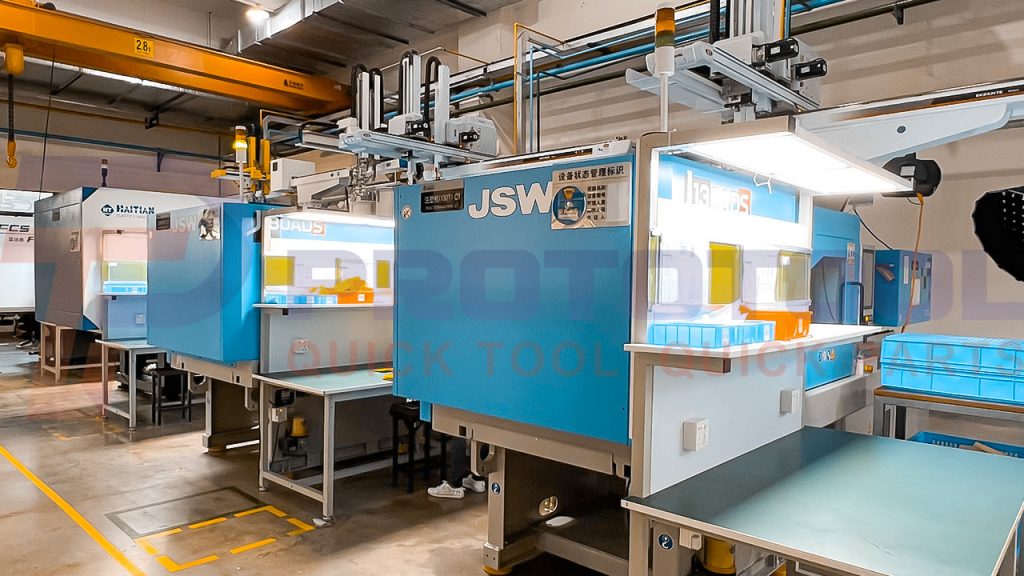
Now you always have the choice to hand everything up to your injection molding manufacturers and let them handle it independently. On the other hand, keeping abreast of developments is always a good idea because it may help you determine what options are likely to be most beneficial to you. The following is a list of the many types of injection molding machine:
Injection Molding Machine: A Brief Overview
An Injection Molding Machine, sometimes referred to simply as an injection machine, is a specialized machine that produces various plastic goods. Most plastic injection molding machines comprise two primary components: the injection device and the clamping unit. The injection unit’s job is to turn the plastic pellets that have been put into liquid by heating them. The clamping unit is utilized to transport the mold and supply the necessary force to close, clamp, and perform various other operations on the mold. In general, the advantages that come along with the use of an injection moulding machine are quick processing and low overall cost.
Types of Plastic Injection Molding Machines:
The injection molding machine is classified into different structures or performance methods. Hence, different structures of machines use different Injection molding machine parts, making their performance, usage, and outcomes differ. To better understand the usage and utilize the injection molding machine process to its full potential, it’s essential to understand the different types of machines and the different injection molding machine parts involved.
Injection Molding Machine Types Designed According to Different Trends of Switching Mode:
Horizontal Injection Molding Machine:
The horizontal injection molding machine is used the most and has the broadest range of applications. This machine is designed with a comparatively low body, rapid molding, and user-friendliness in operation and maintenance.
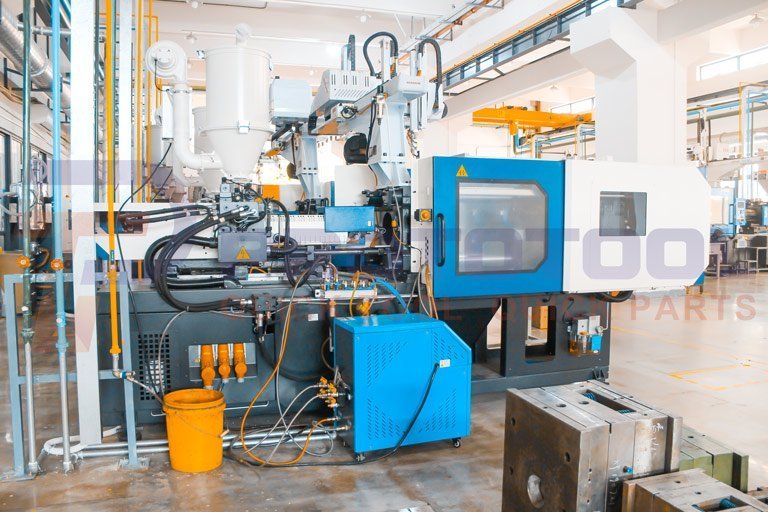
Vertical Molding Machine:
A vertical injection molding machine is what it sounds like a machine that molds plastic in a vertical orientation. In most cases, it helps produce relatively small molds. It allows for injecting a greater variety of items while simultaneously reducing the required space. The vertical injection machine’s potential to increase production efficiency may be significantly bolstered by adding either a rotating table or a conveyor belt.
Machine Types Designed According to Different Drive Methods:
Hydraulic Plastic Injection Molding Machine:
The hydraulic injection machine relies largely on hydraulic power for its injection force. When creating plastic components, you should also manage and change the temperature of the machine; otherwise, it is easy to create scrap. The hydraulic plastic injection molding machine should constantly be operated to prevent the machine from being harmed by inactivity.
All-Electric Injection Molding Machine:
The price of an all-electric injection molding machine is higher than that of a hydraulic injection machine. However, because an all-electric Engel injection molding machine or one of the other brands doesn’t need to be on standby or change the temperature, the injection molding products are more stable. They can be more efficient than those made by the hydraulic injection machine. The fully electric injection machine does not have a hydraulic system. Thus there is no possibility of liquid leaking out of the device at any point.

Hybrid Injection Molding Machine:
The Netstal injection molding machine or other brands of machines comprising a hybrid operating technology possesses the qualities of high efficiency as well as financial advantages. It is designed as a model that incorporates the benefits of the hydraulic and all-electric type of Injection Molding Machine process. It is a machine for injecting plastic that is used by many firms nowadays and acts as a counterweight to the other two. There are medium costs for both the machine itself and its energy, which is one of the advantages and downsides of using a hydraulic press.
When selecting an injection molding machine, the energy cost to run it is, as is common knowledge, one of the most important factors to consider. The servo oil-electric injection machine is outfitted with a high-precision servo motor to accomplish this goal. This ensures that the machine will achieve the same level of cost savings as the all-electric variety. Considering the price of power, the machine and the clamping mechanism have become easier to use and more precise and long-lasting, which has resulted in a significant reduction in the cost of maintenance. The servo hybrid type is a significant innovation in the hydraulic injection molding machine because it has the benefit of cost savings and more significant injection and pressure holding pressure than the all-electric type. This is a significant advance in the industry.
Injection Molding Machine Types Designed According to Different Applicable Raw Materials:
Thermoplastic Injection Molding Machine:
After heating, thermoplastics transform into liquids, and then once they have cooled, they convert back into solids. PE, PP, ABS, and TPU are some of the most common thermoplastics. These plastics are the most common type of plastic that does not retain their rigidity when heated. After heating the plastic pellets, a thermoplastic plastic injection machine will employ thermoplastic qualities to inject liquid plastic into the mold. This will occur once the plastic pellets melt. The plastic eventually returns to its solid form after it cools down, at which point the components made of plastic are extruded from the machine.
Thermosetting Plastic Injection Molding Machinery:
Upon heating, thermosetting polymers undergo a phase transition from liquid to solid. Because this transition can often only be created once and cannot be recycled in the same way as thermoplastics can, it is not favorable to the environment. Melamine and FRP are two examples of commonly used thermosetting polymers today. Following the processing step, the thermosetting plastic injection machine injects liquid plastic into the mold. The creation of the plastic components is then finished by heating the pieces until they become solid.
Powder Injection Molding Machine or Metal Injection Molding Machine:
Other names for powder injection molding include “metal injection molding” (MIM), “ceramic injection molding,”(CIM), and “plastic injection molding.” The raw ingredients include fine metal or ceramic powders that consist of precision-treated and bonding compounds. Typical uses are portable gadgets, smart devices, electrical products, etc. Moreover, powder injection generates small parts with a high precision level and a detailed look. In particular, powder injection produces metal components that have the qualities of high strength and high density. After the powder injection machine’s metal powder and bonding material processes, it becomes smaller molding raw materials comparable to plastic particles. After the manufacturing of the injection-molded part, it undergoes post-processing steps like cleaning, heating, etc.
Machine Types Designed According to Different Clamping Structures:
Single/Double/Four Cylinder Direct Pressure Injection Molding Machine:
According to the number of hydraulic cylinders, the direct pressure injection machine is further subdivided into many distinct versions, such as a single-cylinder machine, a double-cylinder machine, and a four-cylinder machine. Because the hydraulic cylinder of the type with a single cylinder has an enormous surface area, it will be more challenging to produce the various pieces, which means that there will be many issues when the single-cylinder model is used in a vast machine. Accuracy is of the utmost significance. If the precision of the machine is not high enough, the mold clamping accuracy will suffer immediately.
Currently, multiple-cylinder direct-pressure injection machines are gradually replacing single-cylinder direct-pressure injection machines. This is a steady process that is still ongoing. The term “double-cylinder injection” refers to using two oil cylinders, both of which simultaneously perform the injection operation. When both cylinders operate at the same pressure, the double-injection cylinder’s speed will typically be lower than that of the single-cylinder. Still, the pressure of the injection will be higher. The template design of the four-cylinder direct pressure clamping is distinct, and the oil cylinder also includes an automated balancing correction function. As a result, it does not influence the precision of the clamping, and the range of applications is quite extensive.
In the past, the most typical issue that occurred while utilizing the four-cylinder direct-pressure clamping model was the application of an imbalanced force, which led to the mold’s degradation and the product’s inability to satisfy the standards for its size. Most of these problems, however, may be considerably alleviated if the components are handled with sufficient accuracy. Compared to the toggle type, the direct pressure type benefits from a longer lifespan, direct mold clamping, and minimal resistance during motion. As a result, it eliminates the requirement for regular lubrication and reduces maintenance expenses and maintenance and upkeep. The machine is more durable than the toggle-type injection molding machine, even though it costs more than the toggle-type injection machine.
Composite Direct Pressure Plastic Injection Molding Machine Process:
The compound direct pressure injection machine uses the same components as the direct pressure type machine to inject the components into the compound. The injection molding machine technology provides a more robust mold opening and a longer clamping stroke. The components’ resistance to wear and tear is an important criterion. Hence, only a select few manufacturers make them in significant quantities.
Toggle Type Injection Molding Machinery:
The toggling kind of injection machine functions through acceleration and deceleration. It also has a simple operation, cheaper running costs, and a lower cost for the machine itself. Additionally, the structure is more difficult to understand.
Injection Molding Machine Types Designed According to Different Injection Structures:
Monochrome Plastic Injection Molding Machine Parts:
These injection molding machine parts focus on the entire plastic component for injecting with the same color. The majority of individuals who use injection machines at this time utilize a method called monochromatic injection. In addition, the monochromatic injection can inject items with two distinct hues simultaneously. In the color injection molding machine, operators inject the first color into the first semi-finished product. Then the second color helps process the product to finalize the manufacturing.
Multi-Color Plastic Injection Molding Machine Parts:
The multi-color injection machine manufactured by various popular brands like Sumitomo, Nissei, etc., can concurrently insert plastic components with more than two distinct colors. Currently, the two-color plastic injection molding machine is the type of multi-color injection molding machine with the most widespread usage. This is an application that combines LSR silicone rubber with other materials. In recent years, multi-color injection technology has steadily become a hot trend in the industry. This technology protects the environment, is highly efficient, provides exceptional performance, and possesses many other desirable qualities.
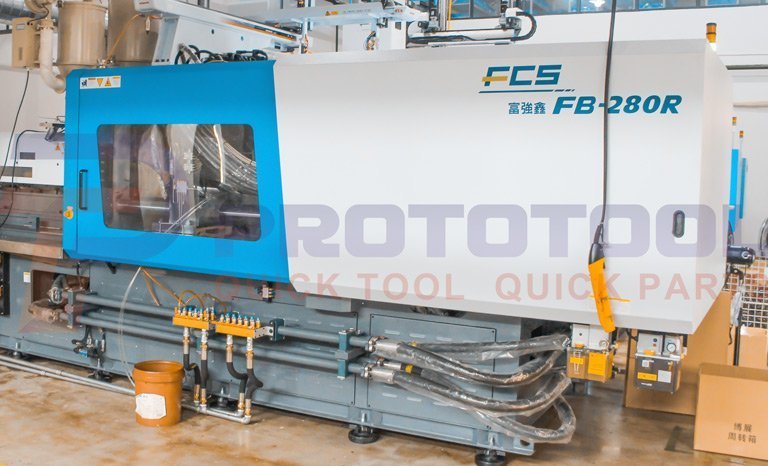
How Much Does Plastic Injection Molding Machine Cost?
The cost of a plastic injection machine depends on the dimensions and the different plastic injection machine brands/manufacturers. Today, plastic injection machine brands are located in different parts of the world, especially the leading industrial countries. From European brands like Engel, Nestal, Battenfeld, KRAUSS MAFFEI, Milacron and Japanese brands like Toshiba, Sumitomo, Nissei, Sodick, JSW, and Fanuc, to Korean and Chinese brands like Yu Jin, LG, Taiwan Chenhsong, Haitian, Dong Hua, and many more – all manufacture and produce plastic Injection Molding Machine of different structures and types.
Hence, while it may be challenging to evaluate the price of the machine according to its type, it is better to consider the following aspects:
- The available tons calculate an injection’s mass, determining the maximum product size. The larger the product, the higher the price.
- Machines from well-known manufacturers like Husky, Cincinnati Milacron, Ferromatik, Negri Bossi, and Boy tend to be costlier.
- Generally, it costs $70,000 per unit for a 3000-ton machine, even when it is manufactured in China. At Prototool, we work with small to medium-sized/toned machines for conducting large-scale and efficient plastic injection molding processes.
- The typical cost for a desktop injection molding machine is between $30,000 and $50,000.
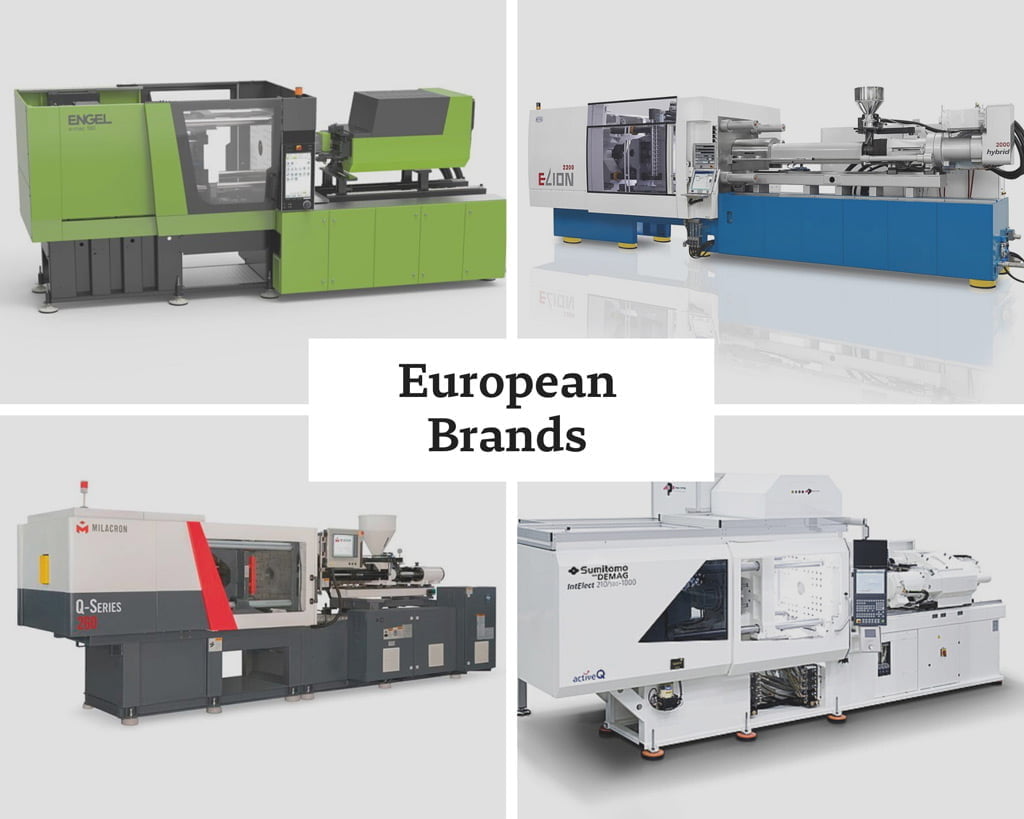
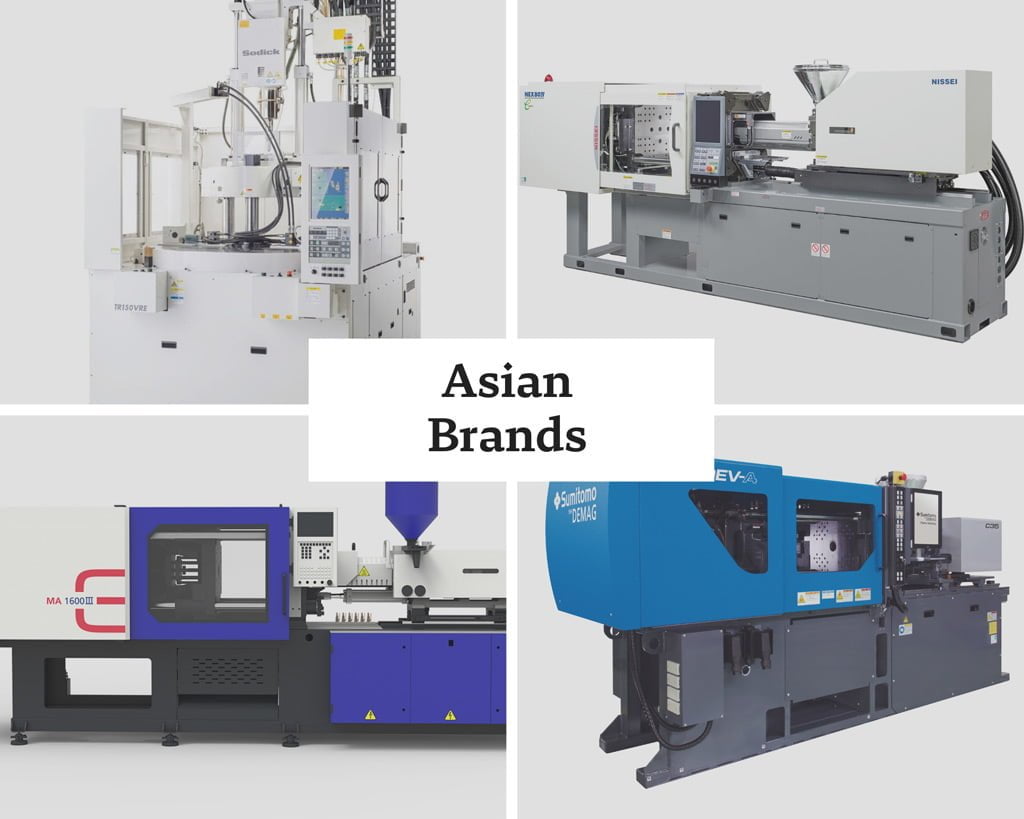
3 Common Injection Molding Problems and Their Solutions:
1. Air Traps:
The air trap issue is that air is trapped in the cavity, causing partial bubbles.
Causes:
When the two melt fronts meet, the air cannot escape from the dividing surface, the ram, or the vent.
Solutions:
Reduce thickness inconsistency and strive for consistent wall thickness in structural design.
(1) Include a vent in the mold design at the final filled location.
(2) Change the gate and runner system.
(1) Reduce the injection speed of the final stage
(2) Raise the mold temperature
2. Short Films
Short shots occur when the mold cavity cannot be filled.
Causes:
(1) Low die temperature, material temperature, or injection pressure and speed
(2) Uneven plasticization of raw materials
(3) Insufficient raw material liquidity
(5) Polymer melt is prematurely cured due to unreasonable structural design.
(6) The part is too thin, or the gate size is too small
Solutions:
Material: Make use of more fluid materials.
The Mold Design:
(1) To avoid the retention phenomena, fill the thick wall before the thin wall.
(2) Increase the number of gates and runner size to lower the process ratio and flow resistance.
(3) To avoid the phenomena of poor exhaust, the position and size of the exhaust port should be adequately regulated.
Machine:
(1) Inspect the check valve and the inner wall of the material cylinder for severe wear.
(2) Inspect if the feeding port has material or is bridged.
Process:
(1) Increase injection pressure and speed to increase shear heat
(2) Increase injection volume
(3) Increase material cylinder and mold temperatures
Brittleness
Brittleness refers to the ease with which a plastic object can be cracked or broken.
Causes:
(1) insufficient dry conditions; excessive use of recycled materials
(2) incorrect injection temperature setting
(3) incorrect gate and runner system settings
(4) insufficient melting mark strength
Solutions:
Material:
(1) Before injection molding, set adequate drying conditions.
(2) Reduce the utilization of recycled resources while increasing the use of raw materials.
(3) Make use of high-strength plastic.
Mold Design:
Enlarge the main runner, branch runner, and gate.
Machine:
Select a well-designed screw to improve temperature distribution during plasticization.
(1) Lower The Temperature Of The Material Cylinder And Nozzle
(2) Lower The Back Pressure, Screw Speed, And Injection Speed
(3) Raise The Material Temperature And Injection Pressure
(4) Increase The Melting Strength.
Choosing the Right Plastic Injection Molding Machinery:
Various injection molding machines exist, so picking the right one from the get-go is essential. This significantly influences injection molding goods’ cost, quality, and efficiency.
· Molding Machine Specifications and Model:
Reviewing the injection molding machine’s performance characteristics as outlined in the manufacturer’s product instructions is necessary before settling on a particular brand and type of injection molding machine. According to the technical criteria of manufacturing plastic items, these parameter values are the critical performance features of the injection molding machine.
· The Mold’s Dimensions:
When selecting the correct injection molding machinery, the dimensions of a mold are critical and should be examined at all times. In addition to the length and breadth of the mold, its height is an important consideration. The machine and the mold must be able to open to more than twice the height of the product to extract the product from the mold. This process is referred to as the “daylight opening,” and it requires space for the optional usage of a robot during the manufacturing process.
· Injection Rate
Furthermore, some final products require a high ejection rate and quick injection to form stably. For ultra-thin products, for example, it may be essential to determine if the machine’s injection rate and firing speed are sufficient and whether you require the accumulator and closed circuit control devices. When everything else is the same, a screw that can provide a higher injection pressure usually has a slower shooting speed. In contrast, a screw that can provide a lower injection pressure has a faster shooting speed. As a result, while determining screw diameter, the injection quantity, injection pressure, and injection rate must be considered.
· Capacity Availability:
Different machine types help manufacture products as per the production capacity. Today, various famous brands manufacture high-demand products that require a large amount of capacity annually. This can include brands like KRAUSS-MAFFEI, Demag, Milacron, Arburg, etc.
· Cycle Timing:
The cycle time also influences machine selection. Products with a short cycle time necessitate using rapid Injection Molding Machine parts, known as sprinters. This specialized machinery is more expensive to buy and maintain.
· Core Pullers:
A mold may contain several hydraulic or pneumatic sliders. There must be an essential driver at the center of every action. Core pullers in a plastic injection molding machine decide how much motion the machine can handle. Ensure that your machine has enough core pullers to operate all sliders.
Plastic Injection Molding Machine Usage in Factory: How Much Work Load can a Medium-Sized Factory Handle?
Today, the amount of plastic injection molding machine brands that manufacture different types of machinery is endless. And with each brand comes different qualities or aspects that make their machine a reliable option. For instance, Husky is primarily at the forefront of the hot runner. Yet, it has overseen the production systems of Coca-Cola and Pepsi. However, it was once the largest manufacturer of 8000 tons of Injection Molding machines. In contrast, BOY specializes in producing small machines with the precision of up to 0. 0009 grams. Different small-scale factories globally use machines of this brand.
Considering the quality, dimensions, and reliability of different brands and their manufactured machinery, the factory’s production effectiveness and speed vary. However, let’s talk about Prototool, which conducts plastic material manufacturing tasks. This medium-sized factory comprises 40 injection molding machines that are enough to carry medium-batch production in a limited time.
Conclusion:
Injection molding is a flexible way to make plastic products that we use in our day-to-day lives. What’s important to consider is that there are different kinds of injection molding. Also, it is important to compare different types, brands, and prices when choosing the best Injection Molding Machine method for your manufacturing needs.
If you have any more questions, contact our experts right away!










